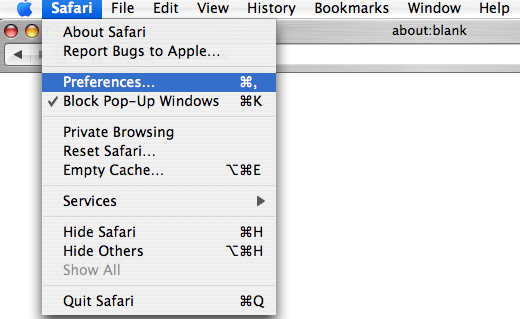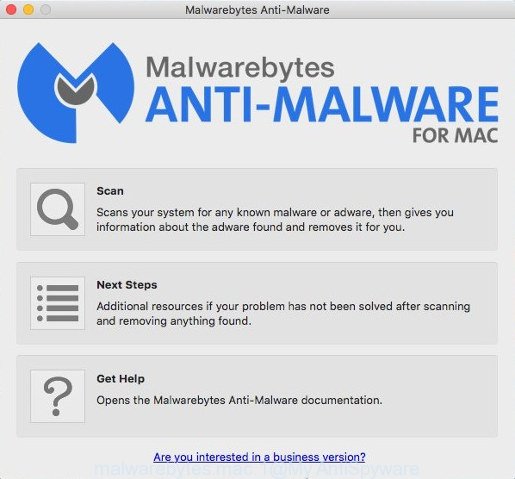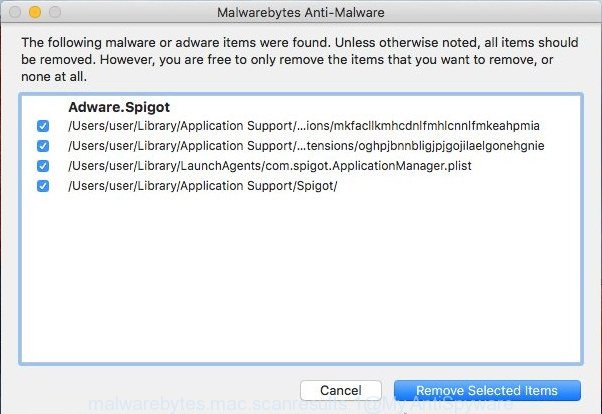Q. PLEASE help me remove Expanded Service app/extension. I’ve completed everything I know how to do and they keep loading… Any ideas how to remove it, it just wont go away!
A. Did it occur after installing any new software? Sounds like you have possibly encountered an adware issue. The fix for that issue is ‘reset browser settings’ and run adware removal tools. What does Adware mean? Adware is form of software designed to insert adverts into your World Wide Web browsing or even desktop experience. Adware can be designed to change your homepage, search engine, search results, or even add toolbars to your internet browser. Adware software run in the background when surf the Internet, and adware can slow down your MAC and affect its performance.

Unwanted ads
Does adware steal your privacy information? Adware software can install a component that enables its developer to track which webpages you visit, which products you look at upon those pages. They are then able to choose the type of advertisements they show you. So, if you had adware software on your computer, there is a good chance you have another that is collecting and sharing your confidential data with third parties, without your knowledge.
Adware software usually gets on your computer together with free programs that downloaded from the Internet. Which means that you need to be proactive and carefully read the Terms of use and the License agreement properly. For the most part, adware software and PUPs will be clearly described, so take the time to carefully read all the information about the software that you downloaded and want to install on your MAC OS.
Threat Summary
| Name | Expanded Service |
| Type | adware software, PUP (potentially unwanted program), pop-up advertisements, popup virus, pop ups |
| Symptoms |
|
| Removal | Expanded Service removal guide |
Do not panic because we have got the solution. Here’s a tutorial on how to remove intrusive Expanded Service adware from the Mozilla Firefox, Safari and Google Chrome and other web browsers.
How to Remove Expanded Service 1.0 app/extension (Adware virus removal guide)
Not all unwanted software such as Expanded Service adware that created to reroute your internet browser to various ad webpages are easily uninstallable. You might see popups, deals, text links, in-text advertisements, banners and other type of ads in the Safari, Mozilla Firefox and Google Chrome and might not be able to figure out the program responsible for this activity. The reason for this is that many unwanted software neither appear in the Finder. Therefore in order to fully get rid of Expanded Service , you need to follow the steps below. Some of the steps below will require you to close this web site. So, please read the guidance carefully, after that bookmark it or open it on your smartphone for later reference.
To remove Expanded Service, use the steps below:
- Remove Expanded Service without any tools
- Delete ExpandedService adware software with free programs
- Run AdBlocker to stay safe online
- To sum up
Remove Expanded Service without any tools
Most common adware may be removed without any antivirus apps. The manual adware removal is guide that will teach you how to get rid of the Expanded Service .
Remove dubious programs using the Finder
First, go to the Finder and uninstall dubious programs, all programs you don’t remember installing. It’s important to pay the most attention to applications you installed just before Expanded Service appeared on your web browser. If you do not know what a program does, look for the answer on the Internet.
Open Finder and click “Applications”.

It will display a list of all software installed on your machine. Scroll through the all list, and uninstall ExpandedService, other questionable and unknown software. Right click to dubious application and choose “Move to Trash”. Another solution is drag the application from the Applications folder to the Trash.
Most important, scroll through the all list, and move to trash any unknown applications. Don’t forget, choose Finder -> Empty Trash.
Remove Expanded Service adware software from Google Chrome
Reset Chrome will allow you to delete Expanded Service adware from your web-browser as well as to restore internet browser settings affected by adware. All unwanted, malicious and ‘ad-supported’ extensions will also be removed from the web-browser. When using the reset feature, your personal information such as passwords, bookmarks, browsing history and web form auto-fill data will be saved.

- First start the Google Chrome and click Menu button (small button in the form of three dots).
- It will show the Google Chrome main menu. Select More Tools, then click Extensions.
- You’ll see the list of installed addons. If the list has the extension labeled with “Installed by enterprise policy” or “Installed by your administrator”, then complete the following instructions: Remove Chrome extensions installed by enterprise policy.
- Now open the Chrome menu once again, click the “Settings” menu.
- You will see the Chrome’s settings page. Scroll down and click “Advanced” link.
- Scroll down again and click the “Reset” button.
- The Google Chrome will show the reset profile settings page as shown on the image above.
- Next click the “Reset” button.
- Once this process is complete, your web-browser’s startpage, new tab page and search provider will be restored to their original defaults.
- To learn more, read the blog post How to reset Chrome settings to default.
Remove ExpandedService from Mozilla Firefox by resetting browser settings
The Firefox reset will remove the modified preferences and disable unwanted extensions. However, your themes, bookmarks, history, passwords, and web form auto-fill information will not be deleted.
Click the Menu button (looks like three horizontal lines), and click the blue Help icon located at the bottom of the drop down menu as on the image below.

A small menu will appear, click the “Troubleshooting Information”. On this page, click “Refresh Firefox” button as displayed on the image below.

Follow the onscreen procedure to restore your Firefox web browser settings to their default state.
Remove Expanded Service adware from Safari
By resetting Safari internet browser you revert back your internet browser settings to its default state. This is basic when troubleshooting problems that might have been caused by Expanded Service adware.
Run Safari internet browser. Next, select Preferences from the Safari menu.

First, click the “Security” icon. Here, select “Block pop-up windows”. It will stop some types of pop-ups.
Now, click the “Extensions” icon. Look for dubious extensions on left panel, choose it, then click the “Uninstall” button. Most important to delete all suspicious extensions from Safari.
Once complete, check your home page and search engine settings. Click “General” tab. Make sure that the “Homepage” field contains the website you want or is empty.

Make sure that the “Search engine” setting shows your preferred search engine. In some versions of Safari, this setting is in the “Search” tab.
Delete ExpandedService adware software with free programs
Is your Mac computer infected by adware? Then don’t worry, in the steps below, we’re sharing best malware removal tools that is able to get rid of Expanded Service adware from the Google Chrome, Safari and Mozilla Firefox and your Apple Mac.
Use MalwareBytes Anti Malware (MBAM) to remove Expanded Service adware
Remove Expanded Service manually is difficult and often the adware is not fully removed. Therefore, we recommend you to run the MalwareBytes Free which are completely clean your MAC system. Moreover, this free program will help you to delete malicious software, potentially unwanted apps, toolbars and browser hijackers that your MAC OS can be infected too.
Click the link below to download the latest version of MalwareBytes Free for Mac.
21022 downloads
Author: Malwarebytes
Category: Security tools
Update: September 10, 2020
After the download is complete, close all programs and windows on your MAC. Open a directory in which you saved it. Run the saved file and follow the prompts.
Once installation is done, you will see window as shown on the screen below.

Now click the “Scan” button to find Expanded Service adware that causes browsers to display annoying pop up ads. While the MalwareBytes Free utility is checking, you can see number of objects it has identified as being affected by malicious software.

After the scan is complete, you can check all items found on your MAC system. Review the scan results and then press “Remove Selected Items” button.

The Malwarebytes will now begin to delete Expanded Service adware software that reroutes your web browser to intrusive ad web-sites.
Run AdBlocker to stay safe online
If you browse the Web, you can’t avoid malvertising. But you can protect your web browser against it. Download and use an ad blocker application. AdGuard is an adblocker that can filter out a lot of of the malicious advertising, stoping dynamic scripts from loading harmful content.

Visit the page linked below to download the latest version of AdGuard for Apple Mac.
3782 downloads
Author: © Adguard
Category: Security tools
Update: January 17, 2018
Once downloading is finished, run the downloaded file. The “Setup Wizard” window will show up on the computer screen.
Follow the prompts. AdGuard will then be installed. A window will show up asking you to confirm that you want to see a quick instructions. Click “Skip” button to close the window and use the default settings, or press “Get Started” to see an quick tutorial that will help you get to know AdGuard better.
Each time, when you launch your Apple Mac, AdGuard will start automatically and stop unwanted pop-up ads, block malicious or misleading web pages.
To sum up
Now your machine should be clean of the Expanded Service that causes multiple unwanted ads and pop-ups. We suggest that you keep MalwareBytes Free (to periodically scan your MAC system for new adware softwares and other malicious software) and AdGuard (to help you block unwanted popups and harmful web-pages). Moreover, to prevent any adware, please stay clear of unknown and third party programs.
If you need more help with Expanded Service adware related issues, go to here.


















